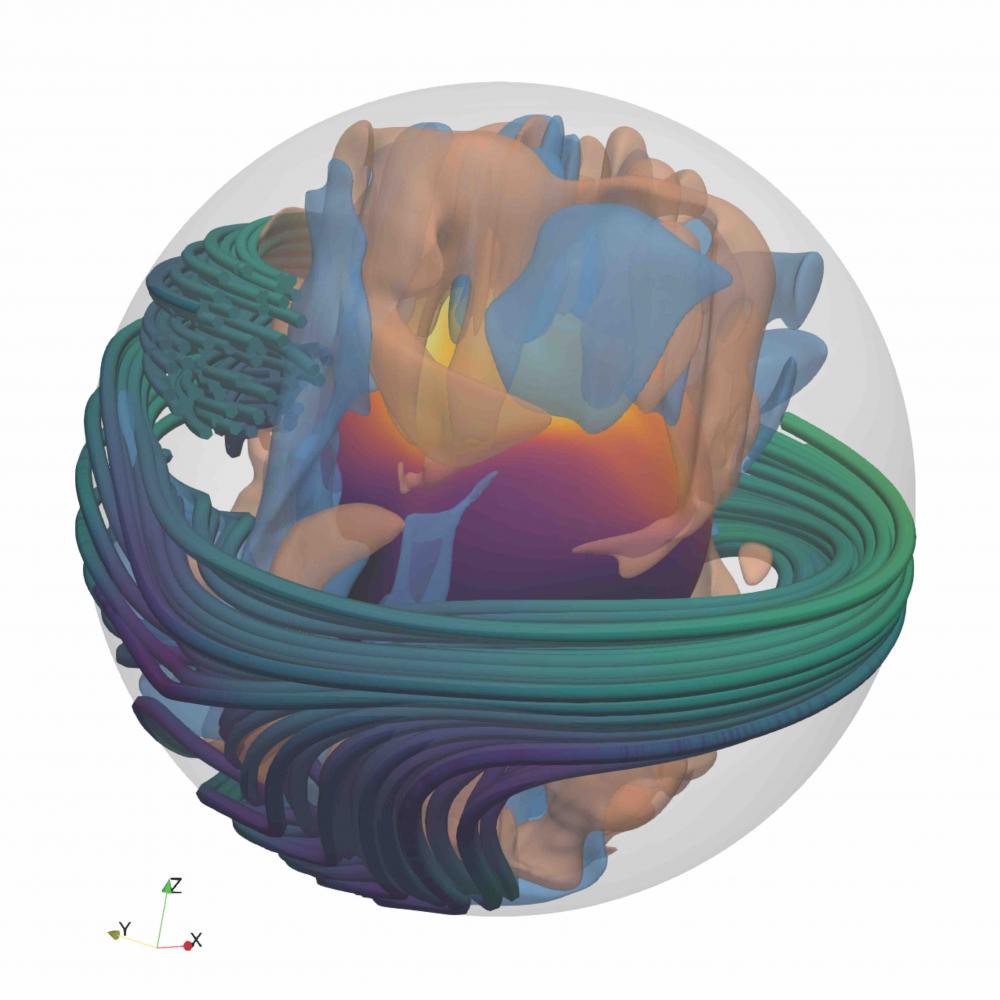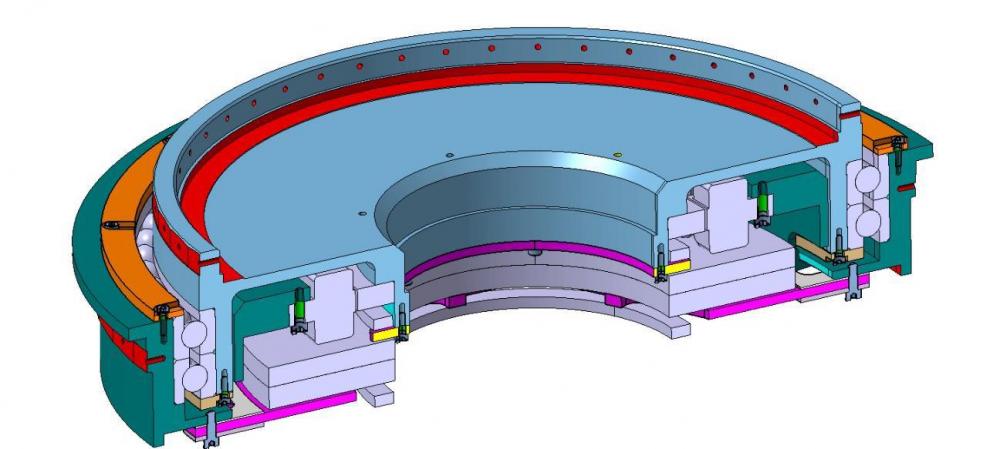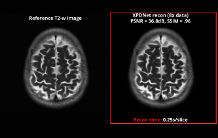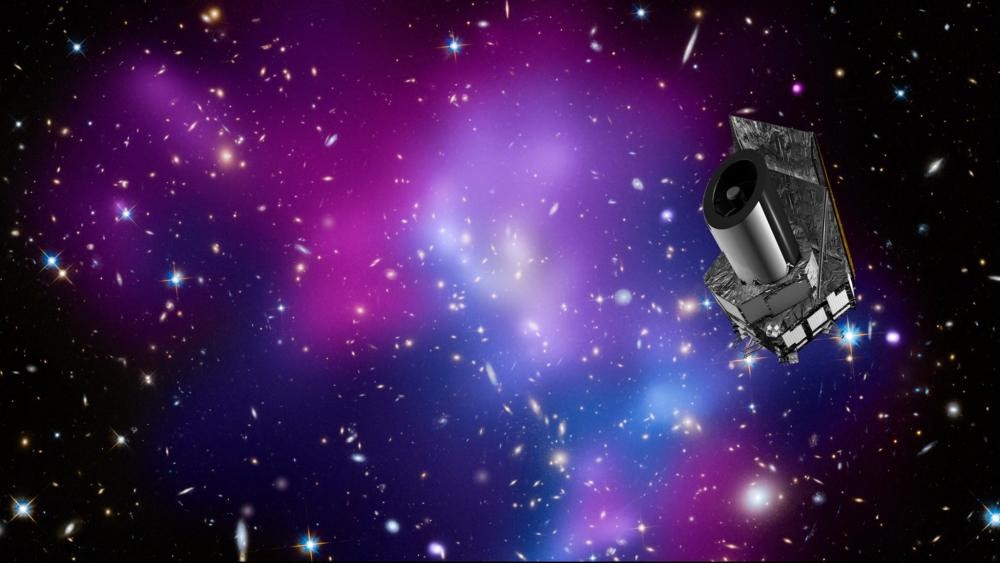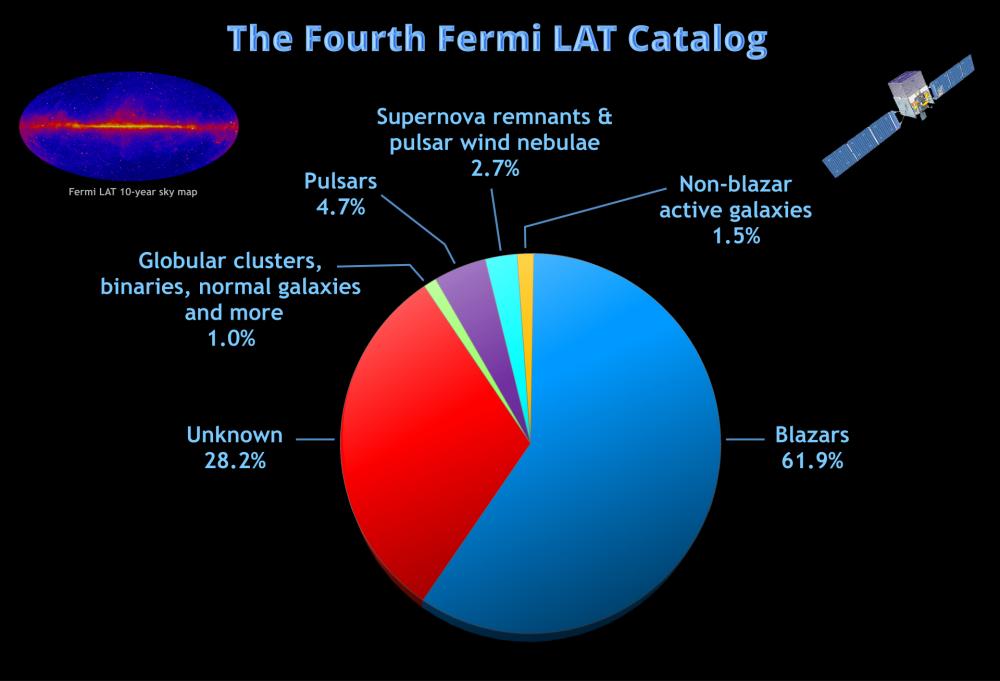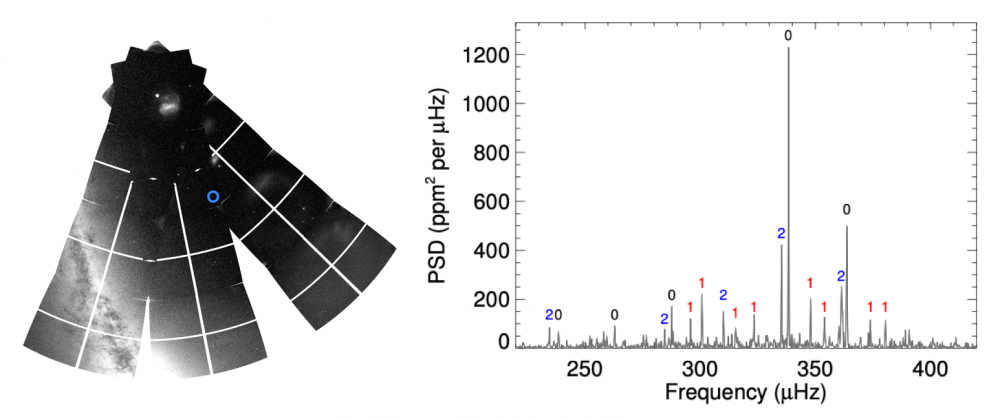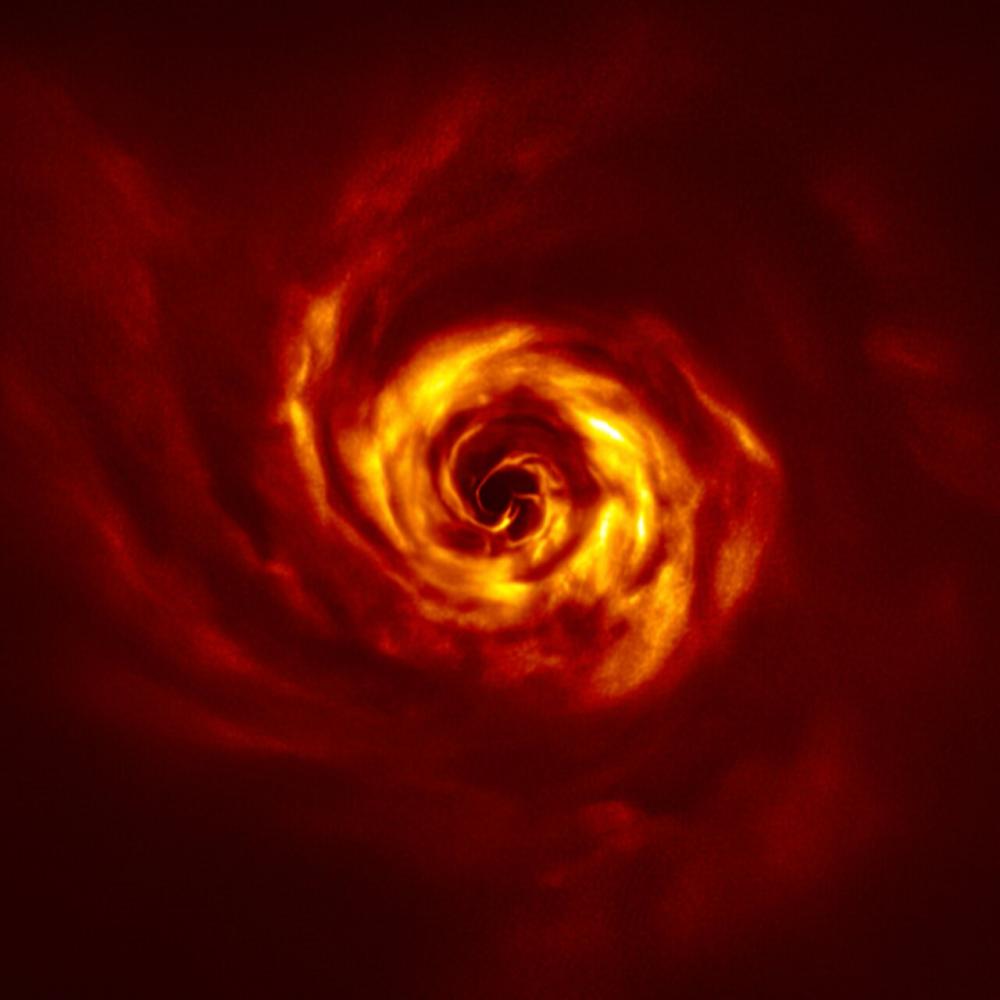News 2020
Magnetars are neutron stars endowed with the strongest magnetic fields observed in the Universe, but their origin remains controversial. In a study published in Science Advances, a team of scientists from the Astrophysics Division at CEA-IRFU / AIM Laboratory and collaborators from the Max Planck Institute and the Institut de Physique du Globe de Paris developed a new and unprecedentedly detailed computer model that can explain the genesis of these gigantic fields through the amplification of pre-existing weak fields when rapidly rotating neutron stars are born in collapsing massive stars. The work opens new avenues to understand the most powerful and most luminous explosions of such stars.
On May 18th 2020, ESO formally closed the preliminary design review of the ELT/METIS thermal infrared instrument. Following this important milestone, the instrument enters into the final design phase (phase C) in which the its design will be frozen just before its building.
In the field of artificial intelligence, international competition is tough. So when researchers from CEA-Joliot and CEA-IRFU challenge start-ups and other companies specializing in AI, we cheer them on. Here’s a success story from the field of MRI reconstruction.
To measure cosmological parameters, the Euclid space telescope will use two main probes: gravitational lensing (Weak Gravitational Lensing) and galaxy distribution (Galaxy Clustering). These measurements will allow us to study dark energy and dark matter, which affect the growth of cosmic structures and the accelerated expansion of the Universe.
In addition to its implications on instrumental developments and data processing, Irfu is actively involved in the development of algorithms needed to prepare the extraction of cosmological parameters that will be derived from Euclid measurements.
Coordinated by Valeria Pettorino, physicist at Irfu's CosmoStat laboratory, in collaboration with Tom Kitching (UCL[1]) and Ariel Sanchez (MPE[2]), an international team from the Euclid collaboration with complementary expertise in theory and observation has just completed a 3-year study characterizing the performances expected from Euclid for these observational probes.
Publication an Arxiv: https://arxiv.org/pdf/1910.09273.pdf
[1] University College London ; [2] Max Planck Institute for extraterrestrial physics
The Fermi-LAT collaboration has published its fourth source catalog, named 4FGL. Based on eight years of data, it contains 5064 celestial objects emitting gamma rays at energies around 1 GeV, adding more than 2000 high-energy sources to the previous collection (published in 2015). More than one fourth of the objects are of unknown nature, calling for numerous follow-up studies. Although its volume is modest compared to the billions of sources listed in optical catalogs, the 4FGL catalog is by far the deepest in gamma-ray astronomy and serves as a reference to the entire domain. The catalog, coordinated by a researcher at the Astrophysics Department (AIM Laboratory) of CEA-Irfu at Paris-Saclay, is accessible on line at the NASA Fermi web site. In parallel, the 4LAC census of active galactic nuclei (coordinated by a researcher at CNRS/CENBG) is also made available to the community.
On May 18th 2020, ESO formally closed the preliminary design review of the ELT/METIS thermal infrared instrument. Following this important milestone, the instrument enters into the final design phase (phase C) in which the its design will be frozen just before its building.
ν Indi is a bright star (visual magnitude mv = 5.3) visible with the naked-eye from the southern hemisphere. By using ground data (ESO telescopes), space data (Gaia and Tess missions) and by combining very diverse spectroscopic, astrometric, kinematic or asteroseismological information, an international team including two researchers from the Department of Astrophysics / AIM Laboratory of CEA-Saclay was able to determine the epoch, between 11.6 and 13.2 billion years ago, of a collision between our galaxy and a small dwarf galaxy, Gaia-Enceladus. This work is published in the journal Nature Astronomy, January 2020.
On May 18th 2020, ESO formally closed the preliminary design review of the ELT/METIS thermal infrared instrument. Following this important milestone, the instrument enters into the final design phase (phase C) in which the its design will be frozen just before its building.
Motivated by unusual features recently observed with the ALMA instrument in a proto-planetary disc around the star AB Aurigae, an international team of astrophysicists including a researcher from the Department of Astrophysics / Laboratory AIM of the CEA-Irfu of Paris-Saclay has just obtained a very sharp high-contrast image of a S-shasped sub-structure in the gaseous and dusty disc surrounding the star. This remarkable structure, unique and captured thanks to the excellent image quality of the ESO VLT SPHERE instrument, indicates the presence of a giant planet in formation, confirming a theoretical scenario of the birth of planets. Published in the journal Astronomy and Astrophysics, and subject of an ESO announcement, this work is a precursor to future research programmes on protoplanetary disks with the future ELT/METIS instrument.
ESA has adopted Ariel (Atmospheric Remote-sensing Infrared Exoplanet Large-survey), the 4th medium-class space mission of its Cosmic Vision program. Ariel is expected to be launched in 2029 by Ariane 6 from the Guiana Space Centre in Kourou. The French team, composed of CNES, CEA and CNRS, has taken charge of the design, production and delivery of the AIRS spectrometer. Pierre Olivier Lagage, astrophysicist at Irfu, is one of the 2 co-PI for the ARIEL consortium; the other co-PI is Jean-Philippe Beaulieu from IAP.
On May 18th 2020, ESO formally closed the preliminary design review of the ELT/METIS thermal infrared instrument. Following this important milestone, the instrument enters into the final design phase (phase C) in which the its design will be frozen just before its building.
On May 18th 2020, ESO formally closed the preliminary design review of the ELT/METIS thermal infrared instrument. Following this important milestone, the instrument enters into the final design phase (phase C) in which the its design will be frozen just before its building.
ESA has adopted Ariel (Atmospheric Remote-sensing Infrared Exoplanet Large-survey), the 4th medium-class space mission of its Cosmic Vision program. Ariel is expected to be launched in 2029 by Ariane 6 from the Guiana Space Centre in Kourou. The French team, composed of CNES, CEA and CNRS, has taken charge of the design, production and delivery of the AIRS spectrometer. Pierre Olivier Lagage, astrophysicist at Irfu, is one of the 2 co-PI for the ARIEL consortium; the other co-PI is Jean-Philippe Beaulieu from IAP.
ESA has adopted Ariel (Atmospheric Remote-sensing Infrared Exoplanet Large-survey), the 4th medium-class space mission of its Cosmic Vision program. Ariel is expected to be launched in 2029 by Ariane 6 from the Guiana Space Centre in Kourou. The French team, composed of CNES, CEA and CNRS, has taken charge of the design, production and delivery of the AIRS spectrometer. Pierre Olivier Lagage, astrophysicist at Irfu, is one of the 2 co-PI for the ARIEL consortium; the other co-PI is Jean-Philippe Beaulieu from IAP.
